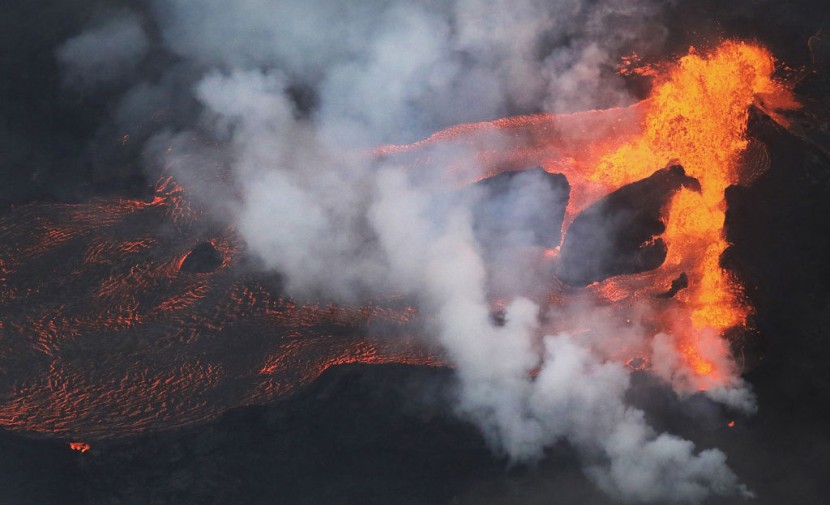
Kilauea, one of the most active volcanoes in the world, resumed erupting on Wednesday after a three-month hiatus, displaying magnificent cascades of mesmerizing, glowing lava in a national park on the Big Island that are at a safe distance from people and structures.
The Hawaiian Volcano Observatory of the US Geological Survey issued a statement indicating that luminescence was detected in webcam images from Kilauea's summit early in the morning, indicating an eruption within the Halemaumau crater in the summit caldera.
Hawaii's Kilauea Volcano Erupts
The images depict fractures at the crater's base producing volcanic flows on the crater floor, according to the observatory. There was no activity outside of a restricted area of Hawaii Volcanoes National Park, according to ABC News.
At approximately 6 a.m., the lava lake spanning the crater floor and the lava that remained from previous eruptions measured approximately 371 acres. It was approximately 1,300 meters wide.
As scientists evaluate the eruption's associated dangers, the volcano's alert level was raised to warning and the aviation color code was changed to red.
Kilauea, the second-greatest volcano in Hawaii, erupted from September 2021 to December of last year. In December, Hawaii's largest volcano, Mauna Loa, also erupted on Hawaii's Big Island for approximately two weeks.
After a brief lull, Kilauea resumed emitting in January. This eruption endured 61 days and concluded in March. Kilauea is the youngest and most active volcano on Hawaii's Big Island.
At 4:44 a.m. local time, the Hawaiian Volcano Observatory of the US Geological Survey detected a luminescence in the Kilauea summit web camera and reported that the volcano had begun erupting.
Less than an hour later, the magma covered the crater's floor with a brilliant black-and-orange web. A broadcast at dawn revealed bubbling magma whose surface was beginning to harden.
The observatory stated in a statement that it was upgrading Kilauea's volcano alert level from a warning to a watch, and its aviation color code from orange to red, "as this eruption and associated hazards are evaluated," adding that "the initial phases of eruptions are dynamic."
The volcanic activity was confined to the main crater of Halemaumau and there were no significant hazards to infrastructure or human life. The only danger posed by the volcano was its gas emissions.
Read Also : Chris Christie Launches 2024 Presidential Bid, Calls Trump a 'Lonely, Self-Consumed Mirror Hog'
Images Show Spectacular Kilauea Volcano Eruption
The eruption was captured by more than just web cameras. The satellite of the National Oceanic and Atmospheric Administration captured the abrupt discharge of heat, ash, and sulfur dioxide from the volcano.
#Hawai | Entra en erupción el Volcán Kilauea. Autoridades informan que hasta el momento la lava permanece confinada en el cráter. pic.twitter.com/bC5TBBzWGY
— Adela Micha (@Adela_Micha) June 7, 2023
According to the National Park Service, Kilauea formed underwater approximately 280,000 years ago and is a fairly typical shield volcano, so-called for its mild slopes that resemble a shield reclining on the ground.
From 1983 to 2018, Kilauea erupted almost incessantly, culminating in the most destructive eruption in its recorded history. Since its 2018 eruption, when "so much magma was lost from the summit," Kilauea has been "relaxed."
It resumed activity in 2020, and the summit eruption on Wednesday was Kilauea's fourth in three years. The first one ran from December 2020 to May 2021, the second from September 2021 to December 2022, and the most recent one from January to early March.
Per NY Times, the eruptions began "rather abruptly," sometimes with only an hour's notice. However, over the past month, Kilauea has begun to send hints. The frequency of earthquakes then began to increase. But that was not enough to indicate an imminent eruption.
Related Article : VIDEO: Ukraine Accuses Russia of Blowing Up Major Dam in Kherson
© 2025 HNGN, All rights reserved. Do not reproduce without permission.








